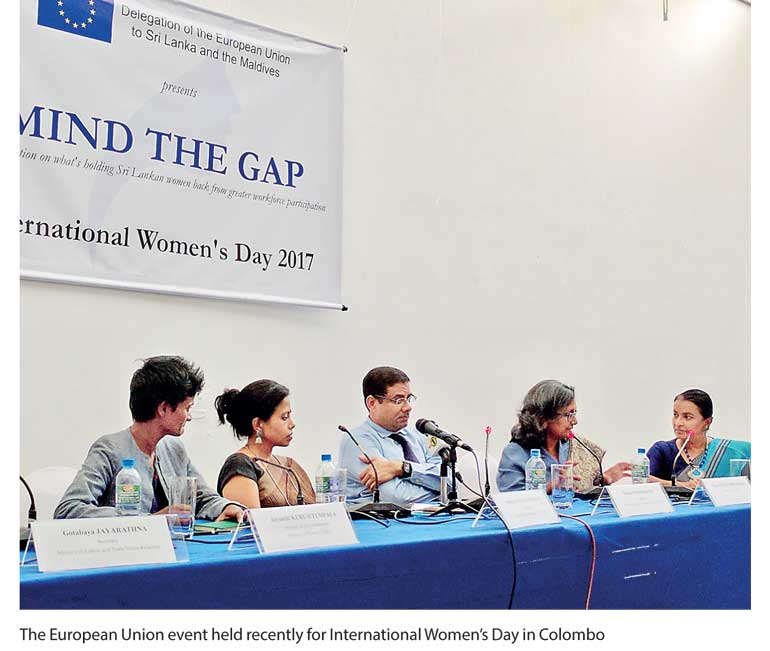Sri Lanka needs more women in the workforce

 Friday, 1 September 2017
Friday, 1 September 2017 The current female labour force participation in Sri Lanka is around 36%. This means that a disproportionate majority of women still remain outside the labour market, with limited or no access to wages, pensions and other benefits tied to gainful employment.
Evidence largely points to several constraints that effectively limits women’s participation in the labour force – ranging from outdated legislation to the lack of access to vocational training and also due to cultural barriers.
It is increasingly evident that social and cultural factors play a defining role in determining women’s inclusion in the labour market. Given that Sri Lanka is short of blue collar workers, increasing women’s access to employment is necessary to increase the female participation in the labour force.
A multiple stakeholder group recently set up at national level to look at providing greater access for women to the labour market recommended that the Government set itself a goal of increasing the Female Labour Force participation to 40% by 2020. Therefore, getting more women into the workforce is not just a human rights issue, but it is a necessity to sustain our economic growth.
Many Sri Lankan women seeking to enter the workplace in Sri Lanka today face a multitude of challenges, including gender discrimination, greater household responsibilities and gender-based disparities in income. Therefore attitudes, both at the office and at home, need to change for more and more women to take their place in the workforce.
One of the most effective ways for Sri Lanka to expand its workforce is simply to get more women to join the labour force. The workforce diversity can also enrich businesses at every level.
Reluctance
 Sri Lankan women might be reluctant to enter the workforce mainly due to family commitments. Traditional responsibilities as a woman can affect their choice of employment. Furthermore, educated women even give up on their career to focus on motherhood and their families. Some companies are hesitant to provide career opportunities to pregnant women and mothers. This can contribute for educated married women not to engage in paid employment.
Sri Lankan women might be reluctant to enter the workforce mainly due to family commitments. Traditional responsibilities as a woman can affect their choice of employment. Furthermore, educated women even give up on their career to focus on motherhood and their families. Some companies are hesitant to provide career opportunities to pregnant women and mothers. This can contribute for educated married women not to engage in paid employment.Women may be also discriminated in Sri Lanka at the point of the job adverts that ask only for male candidates. Some companies still continue to look for only male applicants to fill certain vacancies, especially certain top level management positions. This can discourage women to enter the workforce or to limit the opportunities to climb up the organisational ladder. The expectation that men are more capable than women in certain roles still prevails in society.
Another reason is lack of safety. If women are asked to work late hours without providing transportation facilities they might be discouraged to engage in jobs. Also women may face difficulties like violence and sexual harassment at workplace.
Options
Therefore, it is important to provide flexible working hours and assure safe transport and a safe working environment for women by introducing more policies against harassment. Provision of safe childcare and day care for mothers can also encourage women having children to enter the workforce.For women, being married and having children reduces the opportunity of entering the workforce, whereas being married encourages men to enter paid employment. Because sometimes companies believe that mothers are less committed to work since they have other commitments and that fathers are more committed to their workplace.
Attitudes of people and companies can also affect the rate of women participation in the workforce. For instance, women are believed to be less capable in certain specific roles even though they are equally capable and proficient as men. Also, the attitude of their families towards certain jobs can hinder them from entering the workforce.
Differences in the way that the labour market values skills of men and women can make educated women reluctant to enter the workforce. Therefore offering young females access to career counselling and designing courses of study that create candidates for available jobs while the policy makers work on addressing institutional and legal issues that hamper women’s participation is a good option in the short term.
(The writer is a HR thought leader.)
